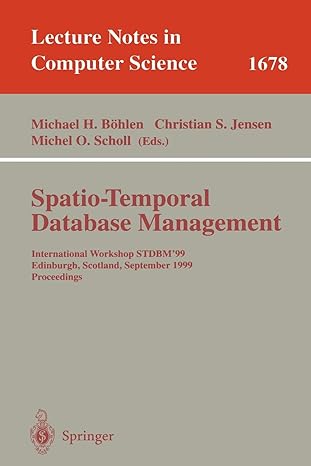Question
Problem Description: The Colorado Tool and Dye Corporation, Inc. (CTDC) sells construction equipment in Colorado, New Mexico, Arizona, and Utah. CTDC needs a business report
Problem Description: The Colorado Tool and Dye Corporation, Inc. (CTDC) sells construction equipment in Colorado, New Mexico, Arizona, and Utah. CTDC needs a business report of the sales for each day, and your job is to write program that will take sales data from a computer user, aggregate it, and produce a report. The report should begin by asking the user to input the state (CO, AZ, NM, or UT), sale date, and sales tax rate for the given state- this data should be input by the user ONCE at the start of the report and then be displayed back to the user only once - this is the report header. The user should then input the sale ID and the pre-tax sale amount for a sale. Next, the report will display an output line showing the sale ID, the pre-tax sale amount, and the post-tax sale amount paid by the customer (this output will be shown after the data is input for each sale). After all sales records are entered and displayed, the user should enter exit as the sale ID to indicate they are done entering sales information, and then a report summary should display the total pre-tax sale amount, the total post-tax sale amount and the average post-tax sale amount. The summary must also report the "sale with the highest post-tax sale amount" by displaying the highest post-tax sale amount and associated sale ID. In the event that there are multiple instances of the largest post-tax sale amount only the first instance should be reported. Note that the pre-tax sale amount is the listed price- similar to a MSRP- Manufacturers Suggested Retail Price. The post-tax sale amount is the actual amount of the sale after taxes have been applied- (see the formulas below). The sales tax rate will vary by state, so it is an input field. The state sales tax rate should be INPUT as a decimal. For example, if the sales tax is 11%, the user should input 0.11. All monetary inputs should be displayed with two decimal positions and should be expressed in dollars and cents (using the $ sign when appropriate).* All monetary outputs should be displayed with the decimal positions and should be expressed in dollars and cents (using the $ sign when appropriate).* Just to be clear, the sales data for each state is entered as a batch process at the end of the day. Users of the program at CTDC will enter the data which consists of the state, sale date and sales tax rate (these three fields are input once) followed by each sale record containing the sale ID and pre-tax sale amount. Users will enter exit (just the letters e x i t, they will not enter double quotes) as the sale ID when they want to exit the program and prompt the output of the final report (which consists of the total pre-tax sale amount, the total post-tax sale amount, the average post-tax sale amount, the highest post-tax sale amount and the associated sale ID.
Page 2 of 4
Page 3 of 4
Page 4 of 4
Step by Step Solution
There are 3 Steps involved in it
Step: 1

Get Instant Access to Expert-Tailored Solutions
See step-by-step solutions with expert insights and AI powered tools for academic success
Step: 2

Step: 3

Ace Your Homework with AI
Get the answers you need in no time with our AI-driven, step-by-step assistance
Get Started


